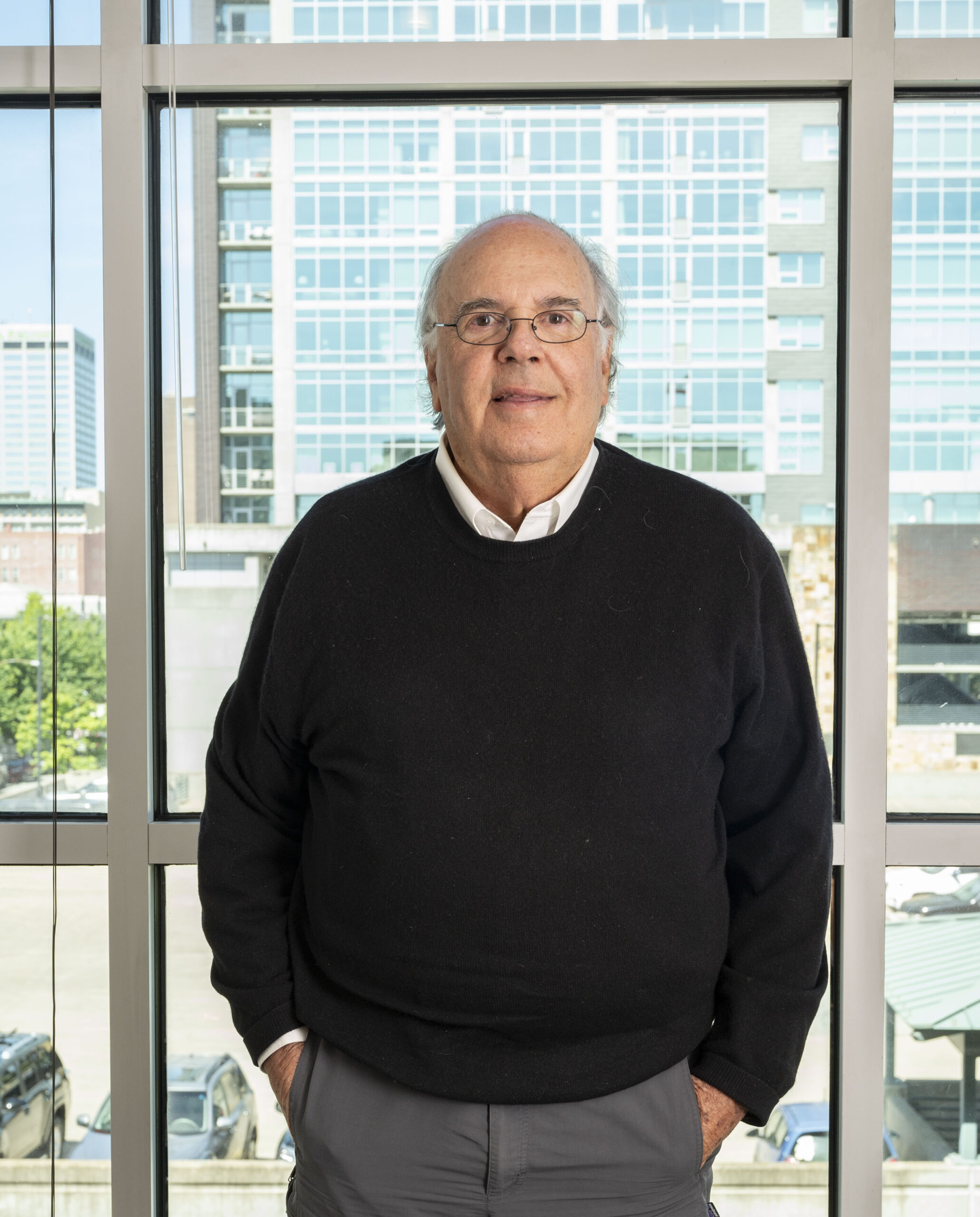It takes a village to save a downtown. But first a village needs a generator, a spark. What impact can one person have on the resurrection of a struggling part of a city? Consider the case of Jimmy Moses and the success of Little Rock’s River Market and the entire central business district.
Many who enjoy Little Rock’s River Market District have no knowledge of how the area looked almost a lifetime ago. A view south from across the Arkansas River would have, in 1972, revealed a landscape containing a jail, a derelict tannery and other abandoned buildings, an active railroad line, and scads of empty liquor bottles sparkling in the sun.
South of all this stood the historic Capital Hotel, which once hosted president, and savior of the Union, Ulysses S. Grant and his wife, Julia. In 1972, it mainly hosted prostitutes practicing their profession.
Today a typical guest in the five-star facility might practice international finance. The entire area throbs with visitors and locals. The success of the River Market area has spread north along Main Street. Things are different from the early 1970s. There is life, and it is good.
Recognizing all who contributed to the rebirth would require a lengthy list. Choosing one person pays honor to them all.
Jimmy Moses serves that purpose.
Many would agree that a successful generator of a downtown’s rebirth has roots in the city, is educated and experienced in the nuances of urban planning, and is a bold risk taker not deterred by setbacks.
This makes Jimmy Moses a triple threat.
Most know him now as one of the founders, with co-visionary Rett Tucker, of the real estate development firm Moses Tucker Partners. One can find the firm in Little Rock’s River Market District near many of its numerous regenerative projects. Other readers may remember him as the heir apparent to one of Little Rock’s most endearing Main Street retail outlets: Moses Melody Shop. His roots run deep, back to his great-grandfather Herman Kahn, who developed the landmark Marion Hotel on Markham Street that once stood at the site of the Statehouse Convention Center.
What does having roots contribute to being a generator of redevelopment of a neglected part of the city? His answer is passion, passion dedicated to “focusing energy on the redevelopment of the urban core.”
That proved a particularly important aspect in Little Rock. In the 1970s, the city and the state were just emerging from a decade of slow growth resulting from the school-integration crisis of 1957.
Downtown Little Rock had also survived the national movement called “urban renewal.” New buildings emerged at the cost of losing many smaller ones and retail businesses, an important part of the retail fabric. This would affect preservation efforts. “Without urban renewal, these [buildings and some businesses] would have still been around,” he comments, “so we had to start out behind.”
“I believe cities have something like DNA, as people do,” Moses adds. “In ours, there was an impulse to destroy the old and build the new. But the new development was slow to occur.”
Sensing the decline of retail on Main Street, and dreaming of horizons beyond the family store, Moses left retail and took a position as executive director of Little Rock Unlimited Progress, created by boosters dedicated to reviving downtown retail. The failure of that organization’s efforts tested his passion, but left him with an interest in urban planning. In 1976, he and his family left Arkansas, presumably for good. They traveled to Gainesville, Florida, where he obtained a master’s in urban and regional planning from the University of Florida. With diploma in hand, the entire country, no doubt, seemed open.
A job offer from the legendary urban planning and development firm of Hodges, Vines, Fox and Associates lured him back to Little Rock, a fortuitous move for him and the city. There he developed real-world skills in developing plans for disparate communities. But the passion for his hometown never left him, nor did a passion for making things happen.
That led to his forming a company with two friends, John Allison and Rick Redden, both architects. The firm eventually morphed into the present company. Between the first project, the restoration of the former Gans Building on Second Street, to today’s developments east of Interstate 30, were a series of successful ventures in and around Little Rock’s urban core.
In addition to the projects generated by Moses and his associates over the years, other improvements bolstered downtown Little Rock. Each time the bell of success rang, Jimmy Moses was there, once in helping overcome resistance to locating the Clinton Presidential Library near the eastern terminus of the River Market.
Are roots and passion enough to make a successful generator? “At 30 years of age, we were unknown quantities, but aggressive in sharing a vision to make Little Rock a better place,” Moses said. “We talked to anyone who would listen.”
What is important about sharing a vision? One great result of talking to myriad individuals and groups is the elimination of so-called “silos.” These occur within administrative organizations and also in cities. Individual departments or groups tend to focus inward and neglect lateral communication. This, in turn, thwarts synergy among entities with common goals.
Few people are as adept at lateral communication as Jimmy Moses. This has allowed his ties to the city, his talents and his passion to extend beyond his own projects. He has always shown a willingness to be one cog in the wheel of progress so that many may succeed. Is this the ultimate test of a development generator?
“Never underestimate incidents and serendipity,” Moses said. He recalls the time in 2003, early in his development career, when the River Market dream needed a strong anchor. “My partners and I had a real estate contract on the old Fones Brothers building,” a substantial but abandoned building in the heart of the proposed “River District.”
Moses and partners shared a dream of repurposing the building for residential, including some loft apartments, “But we really didn’t know what we were doing at the time,” he admits. “Then one day I happened to run into Bobby Roberts, director of the Central Arkansas Library System. I mentioned that we had a contract on the Fones building and he mentioned that he had a need for a new main library.” Down came the silos.
Soon the library had a home, and the River Market had a strong anchor. Several other anchors now grace the once-neglected urban core of the state’s capital city, testament to the passion of groups and individuals. In the long run, it’s not a city that creates redevelopment. The city’s role is to allow it to happen. It’s people like Jimmy Moses who make it happen.
A request to name two of his favorite projects resulted in one anticipated and one surprise answer. The first is the landmark development 300 Third Tower, in the River Market area. Built in 2007, when residential development posed a gamble in downtown Little Rock, it is an 18-story residential project with 98 condominiums, a restaurant and a salon.
The second development of which Jimmy Moses is most proud — Bruno’s Little Italy — reveals his strong roots in the community. Bruno’s was a landmark restaurant that had served Little Rock and surroundings since 1949. (See a history of the family and restaurant at http://www.brunoslittleitaly.com/history/.) When changes to Roosevelt Road traffic patterns caused the original location to suffer, the restaurant began the first of a couple of partly unsuccessful relocations. The institution closed in 2011.
But Jimmy Moses didn’t forget it. “It was the first restaurant I remember dining at,” he said. “It was always a favorite.” In 2013 he worked his magic, convincing the descendants of the original Bruno family operators that Bruno’s should take part in the rebirth of downtown Little Rock, in a new location on Main Street. They agreed, and the rest, as they say, is history — a history that is still being enhanced by Moses and his associates.
Individual catalysts for downtown development are not rare in our state. They succeed when passion and talent act in harmony with a shared vision and the nerve to allow dreams, not fear of risk, to govern. Fortune blessed Little Rock with such an individual. His work wasn’t easy, but a passion supported by a partner, continual education and roots in the city helped overcome failures along the way. Thwarted? On occasion. Discouraged? Often. Defeated? Never.
“After all,” Moses said, “My great-grandfather developed the Marion Hotel.”
DNA? Maybe so. It also helps that he is one of the nicest people you will ever meet.
Interested readers can find a listing of the work of the Moses-Tucker firm through 2017 at https://arktimes.com/news/cover-stories/2017/02/23/moses-tucker-on-the-move.
Jim von Tungeln is an urban planner and staff planning consultant with the Arkansas Municipal League.



